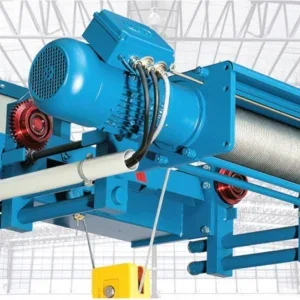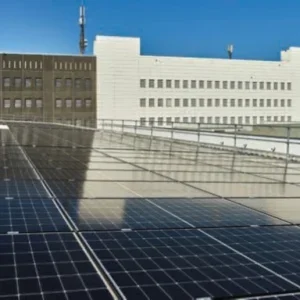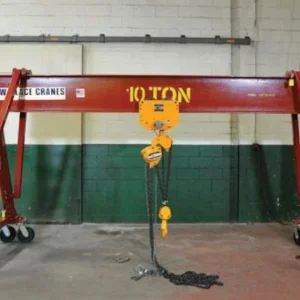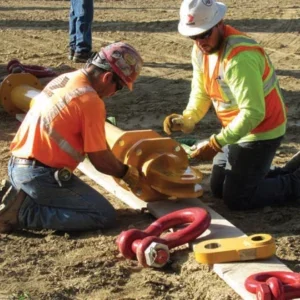The Mixshield is viewed as a universal solution for tunnel construction in heterogeneous ground conditions and, over the years, it has proved itself as a reliable procedure for safe support of the working face. The basic principles of tunnel face support system are well known.
Continuous innovation and further development in mechanical tunnelling are based, among other things, on experience gained during construction, as on work at Grauholz in Switzerland, Westerschelde in the Netherlands, Socatop (Paris) in France and Zurich-Thalwil in Switzerland show.
Grauholz Tunnel, Switzerland
A convertible shield with two modes of operation was the choice for the 5.5km long Grauholz railway tunnel near Bern in Switzerland. A shielded TBM with conveyor belt spoil removal drives the hard rock section, with a Mixshield in Hydroshield mode presenting a slurry supported tunnel face and hydraulic spoil transport in the soft ground.
An integrated stone crusher with an opening capacity of up to a metre breaks down larger blocks and boulders to a size which can be conveyed. The large (11.6m) diameter of the machine allowed spoil separation equipment to be installed on the back-up system with considerable savings in the pumping and pipe system.
With the Mixshield mode, active support of the working face is possible with suspension pressure counteracting the water and soil pressure. In order to prevent loss of air pressure, special suspension mixes of bentonite, polymer and sawdust built up an airtight membrane of flushing mud at the tunnel face, allowing face entry procedures.
Little hard rock presence in the face and high water pressures during TBM tunnelling called for equipment allowing rapid closure of nthe face chamber, and rapid changeover from one mode of operation to the other if needed.
The experience gained during the Grauholz project led to further developments in the Mixshield process as an efficient method for mastering complex soils, mixed tunnel faces and rock formations.
Westerscheldetunnel, the Netherlands
The Westerschelde is a much travelled waterway between the North Sea and Antwerp harbour in Belgium. Started in mid-1999, the construction under it of two 6.6km long, parallel tunnel tubes under it, each with an external diameter of 11.33m, created challenges in respect of machine design, the process technology and actual construction.
In connecting the provinces of Zuid-Beveland and Zeeuwsch-Vlaanderen in the west of Holland, two shield machines of the Mixshield type are tunnelling under the two shipping channels Pas van Terneuzen and Pas van Everingen.
The maximum expected support pressure is 8 bar at the lowest point, which is greater than that of the Tokyo Bay tunnel in Japan with 5 bar. The extreme conditions place high demands on personnel and the machine, in particular during entry to the working chamber for maintenance.
The highly plastic Boomse Klei, which has a tendency to bond, represents a particular challenge for mechanical tunnelling. Of the total length of the tunnel to be excavated, 34% of the face is completely in sand, 32% completely in clay and 34% in mixed clay and sand conditions.
The machine design has been adapted to the complex surrounding geological conditions (Figure 1) and an open spoke cutting wheel with rims was designed to reduce the metallic surfaces subject to bonding as much as possible. An active centre cutter in the cutterhead with integral flushing circuit and high pressure cleaning system reduces the build-up of material, and increases the shearing speed between the soil and the cutting wheel. Fresh slurry penetrates evenly to the tunnel face and maintains the suspension density at a low value.
Bonding
Previous experience has shown that over-loaded bentonite suspension, which is badly separated, is often the cause of bonding in the working chamber. The excavated material then builds up in front of the suction intake. To prevent this additional agitators and a cylindrical crusher installed in front of the suction intakes provide turbulence of the slurry in this area of the machine.
Heterogeneous ground conditions can have lasting effects on the tunnelling if this is restricted to only one type of process. A combined shield offers rapid and uncomplicated underground conversion from slurry support to air pressure support or earth pressure balance (EPB) support with continuously available parallel installation.
Such technical machine modifications fit the Mixshield to the geological conditions using the appropriate tunnel face support, conveying equipment and cutterhead construction. This type of shield type was also the choice for the Socatop project in Paris (Figure 2).
Socatop, Paris, France
For a two-level motorway tunnel to ease traffic congestion in Paris, a Herrenknecht Mixshield/earth pressure balance shield with a diameter of 11.565m was chosen as being able to operate in the local geological conditions of sand, lime, marl, sandstone and solid clay, as well as groundwater at three different levels. With rapid conversion of the operating modes in the tunnel (Figure 3), the machine can be operated in slurry, EPB and semi-open mode, depending on the prevailing conditions.
The shield and backup system of the TBM were equipped for the various modes. In slurry operation the excavated material is conveyed hydraulically with larger rocks broken down by a stone crusher. In EPB operation the machine has a screw conveyer and belt conveyors.
In November 2000, the Mixshield set off in EPB mode. The first 150m were advanced through chalk and flint in two-shift operation, with a screw conveyor and auxiliary belt conveyor, giving tunnelling performances of up to 80mm/min. Subsequently, operation was changed over to tunnel belt conveying and three-shift operation.
Zurich-Thalwil, Switzerland
In driving the Zimmerberg base tunnel (Zurich main station to Thalwil) in Switzerland, part of the Frankfurt-Zurich-Milan European railway network, two tunnelling machines have been adapted to the geological conditions.
For the 2.6km long northern section in the direction of Zurich, a Mixshield took on hard rock (upper freshwater molasse), as well as soft ground which carries groundwater, being changed from hard rock mode to slurry support underground.
In the soft ground section the tunnel runs under municipal buildings and important traffic routes with little overlying ground. To prevent collapse and minimise settlement an injected umbrella of ten 150mm-thick concrete tubes strengthened the final 130-150m around the semi-circular cavity. In three places, the ground was additionally stabilised and sealed by injections from a 3.72m diameter pilot gallery.
The Mixshield, with a boring diameter of 12.36m, was equipped with an eight-arm, closed-mode cutting wheel, with 74 cutter discs of 17in (432mm) diameter. In soft ground, an additional 66 spade type cutting teeth were installed. In dry operation the cutterhead’s eight edge buckets collected the excavated material for transport out via belt conveyor to the rail loading point. It reaches the main access shaft on the surface, Allmend Brunau Nord, via elevator.
During the wet process in soft ground the excavation chamber is filled with a support slurry, with pressure regulated by a compressed air cushion. The water-clay (bentonite) suspension strengthens the tunnel face, preventing settlement, or collapse on the surface.
The primary tunnel support consists of 1.7m wide steel-reinforced concrete lining segments. A ring is made up of seven elements plus a small keystone. After an advance of 1.7m the lining segments are installed under the protection of the shield tailskin. The annulus between the lining segments and the construction ground is filled with grout. The shield tailskin seal prevents the penetration of water, soil, surrounding support liquid or grout.
A two-layer sealing sheet is installed near the second back-up system. This can be injected at a later point if leaks occur. Finally, the invert is coated with concrete, the main drainage line laid, the invert filled and an asphalt covering installed.
Exclusively hard-rock tunnelling was planned for the 5.7km long southern section of the tunnel, in the direction of Thalwil. A shielded, hard-rock, 12.3m diameter TBM was used in sandstone of the upper freshwater molasse. The challenge of the southern section was the contractually agreed tunnelling speed of 23m per working day.
Tunnelling started on 15 September 1998 and finished on 9 December 1999, clocking up an average tunnelling speed of 26m/day. The record daily performance was 40m/day in two-shifts.
Summary
The development of mechanical tunnelling will continue to advance in accordance with specific project requirements. The demand for larger diameters and for a variable design of the cutterhead with optimal adaptation of tooling type and excavation power will continue to lead development of the cutting wheels, not only for loose soil.
Complex slurry shields, designed according to state-of-the-art technology, are suitable for virtually all heterogeneous geological formations with high water pressures. Thanks to its modular construction, the mixshield is useful in loose soil through to rock formations. The future lies in the deployment of more complex shield types.
Related Files
Conversion of Mixshield 2
Conversion of Mixshield
Geological section
Sketch section






